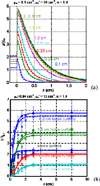A review of in-vivo optical properties of human tissues and its impact on PDT
- PMID: 22167862
- PMCID: PMC3321368
- DOI: 10.1002/jbio.201100062
A review of in-vivo optical properties of human tissues and its impact on PDT
Abstract
A thorough understanding of optical properties of biological tissues is critical to effective treatment planning for therapies such as photodynamic therapy (PDT). In the last two decades, new technologies, such as broadband diffuse spectroscopy, have been developed to obtain in vivo data in humans that was not possible before. We found that the in vivo optical properties generally vary in the ranges μ(a) = 0.03-1.6 cm⁻¹ and μ'(s) = 1.2-40 cm⁻¹, although the actual range is tissue-type dependent. We have also examined the overall trend of the absorption spectra (for μ(a) and μ'(s)) as a function of wavelength within a 95% confidence interval for various tissues in vivo. The impact of optical properties on light fluence rate is also discussed for various light application geometries including superficial, interstitial, and within a cavity.
Figures








References
-
- Graff R, Dassel ACM, Koelink MH, de Mul F, de Mul FFM, Aarnoudse JG, Zijistra WG. Appl Opt. 1993;32(4):435–447. - PubMed
-
- Zhu TC, Hahn SM, Kapatkin AS, Dimofte A, Rodriguez CE, Vulcan T, Glatstein E, Hsi RA. Photochem Photobiol. 2003;77:81–88. - PubMed
-
- Cheong WF, Prahl SA, Welch AJ. IEEE J Quan Elec. 1990;26(12):2166–2185.
-
- Wilson BC, Jeeves WP, Lowe DM. Photochem Photobiol. 1985;42(2):153–162. - PubMed
-
- Marchesini R, Clemente C, Pignoli E, Brambilla M. J Photochem. Photobiol. 1992;16(2):127–140. - PubMed
Publication types
MeSH terms
Grants and funding
LinkOut - more resources
Full Text Sources
Other Literature Sources
Research Materials

